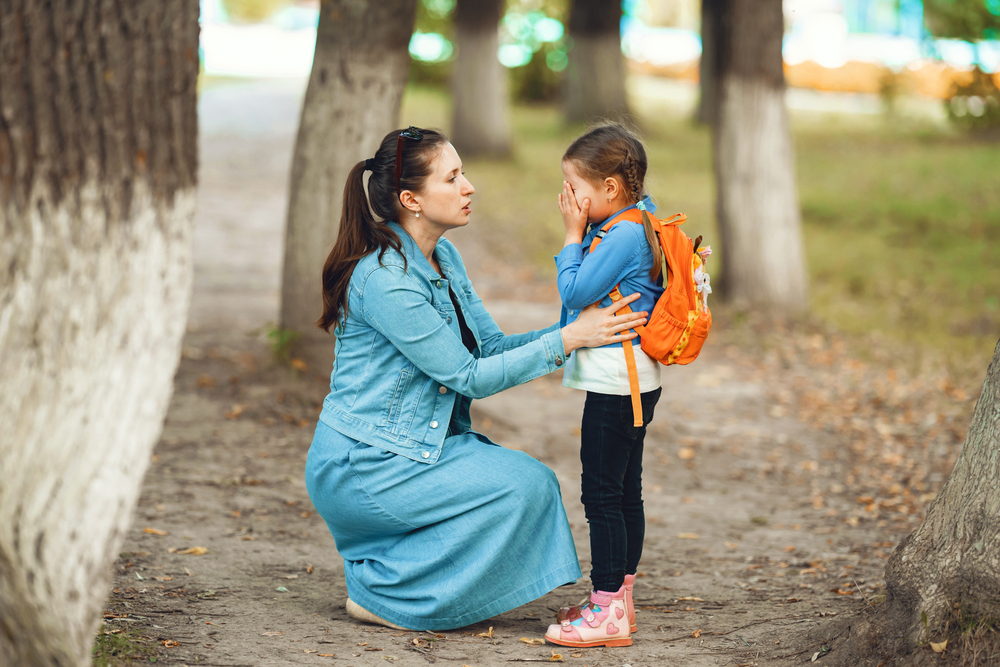Helping Children Cope with Grief and Loss

While it’s common for children to take cues from movies or shows they watch, learning how to process grief in this way usually backfires. Films tend to portray grief in dramatic, oversimplified ways—a somber funeral, a tearful goodbye, or a young person burdened by loss. Yet, there’s a reason we connect with these stories: losing a loved one is a shared human experience. For children, however, this experience is uniquely challenging. It’s often their first encounter with intense emotions, making it both confusing and overwhelming.
What can we, as caretakers, do to help? That’s our topic for today.
We must know that grief is not a linear process, especially for children. According to the American Academy of Pediatrics, children’s reactions to loss vary based on their developmental stage, personality, and the type of loss they experience. Some children may express their feelings openly. Others might withdraw or display behavioral changes. Some may feel anger. Some may feel guilty. Understanding the wide range of reactions along the grief journey is the first step in offering compassionate support.
A simple but effective aspect of helping children cope with grief is encouraging open communication. According to a 2023 article from Psychology Today, children must process grief and loss with listening adults. Patiently allow them to express their feelings and ask questions about what has happened. Create a safe, inviting space where children can open up without fear of judgment or cliché answers. Use clear, age-appropriate language to explain the loss and avoid euphemisms. For instance, instead of referring to someone “passing away,” be direct and compassionate. Say something like, “Grandpa died because his body stopped working.” This clarity is more helpful in processing the reality of the situation, especially for younger children.
Additionally, validating children’s emotions is crucial. Let them know that their feelings are normal. An NIH study takes a deep dive into child and adolescent grief and ways caregivers can facilitate the process of responding to it. This begins with the knowledge that the rollercoaster of emotions and their manifestations can widely vary from child to child.
These three ideas provide sure footing when dealing with sorrow and confusion in times of death:
- Routine and structure. Loss often disrupts a child’s sense of security, and maintaining familiar routines can provide stability. Stick to regular mealtimes. Keep school and sports commitments. Even usual bedtime rituals can offer comfort and predictability. While flexibility is important—especially when a child needs additional time or space to process their emotions—routine can provide them with certainty.
- Physical activity. Exercise and play provide a natural way for children to express their feelings and process their experiences. Activities like drawing, playing sports, or engaging in imaginative play can serve as healthy outlets for emotions that might be difficult to articulate. Physical activity can reduce stress and improve overall mental well-being.
- Peer support. This is particularly useful for older children and adolescents. Death can have an isolating effect on us all. Teens get trapped in believing others cannot understand what they are going through. Encouraging them to connect with friends can help alleviate these feelings of isolation. Resources such as Dougy Center (The National Grief Center for Children and Families) offer excellent peer-based programs that can provide adolescents with a sense of connection and understanding.
A final tip is to recognize when professional help is needed. While most children navigate grief with the support of their families and friends, some may exhibit signs of complicated grief or prolonged distress. If a student persistently communicates hopelessness, difficulty doing everyday tasks, or withdrawals from loved ones, seek the assistance of a therapist or counselor trained in grief work. Professionals can provide tailored interventions and coping strategies to help children progress in their grief journey.
Remember, as we guide children through the process of grieving, we must model healthy coping mechanisms ourselves. Children look to us to understand how to respond to difficult emotions. By expressing our feelings openly and demonstrating self-care practices, we can show children that it is possible to navigate grief with courage and resilience. Whether taking a walk to clear your mind, talking to a trusted friend, or practicing mindfulness, modeling these behaviors can inspire children to adopt similar strategies.
About TLC
The Lincoln Center for Family and Youth (TLC) is a social enterprise company serving the Greater Philadelphia Area. Among its five divisions, TLC offers School-based Staffing Solutions, Mobile Coaching and Counseling, and Heather’s Hope: A Center for Victims of Crime. These major programs are united under TLC’s mission to promote positive choices and cultivate meaningful connections through education, counseling, coaching, and consulting.